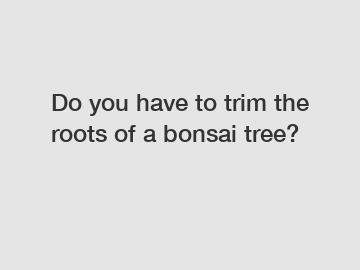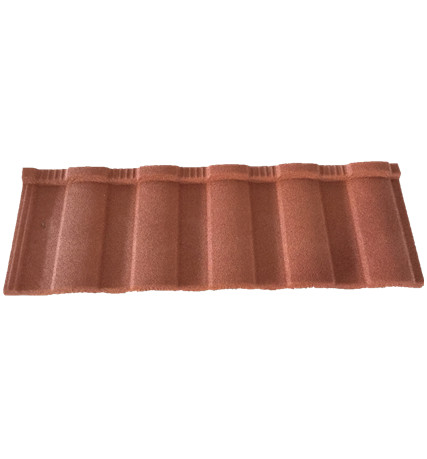Do you have to trim the roots of a bonsai tree?
Bonsai trees have captivated the hearts of nature enthusiasts for centuries. These miniaturized versions of majestic trees can conjure a sense of awe and tranquility. Cultivating a bonsai requires careful attention to detail, and one aspect that often intrigues beginners is root trimming. In this blog, we will explore the importance of trimming bonsai roots, debunk common misconceptions, and delve into the intricacies of this ancient horticultural art.
Root Trimming: A Prerequisite for Bonsai Beauty.
Bonsai trees necessitate a restricted root system, as their small pots cannot accommodate extensive growth. Trimming the roots helps maintain the miniature stature of the tree and enables its survival within the confined space. By removing a portion of the roots, we stimulate new growth, maintain the overall balance of the tree, improve water and nutrient absorption, and promote a denser root system.

Fostering a Healthy Root Structure.
Trimming roots might sound counterintuitive to tree health, but it is a crucial aspect of bonsai cultivation. Just as branches are pruned to maintain shape and proportions, roots also require periodic maintenance. Trimming the root system helps eliminate any damaged or decaying roots that could potentially harm the overall health of the tree. Moreover, it encourages the growth of new feeder roots, vital for efficient water and nutrient uptake.
The Art of Root Pruning:
Root trimming in bonsai should be approached delicately and with precision. Here are some key practices to follow:
1. Timing is Essential: Root trimming is typically performed during repotting, which is usually done every two to three years. Early spring is an ideal time, as the tree is emerging from its dormant phase, exhibiting robust growth potential.
2. Selective Attention: Careful examination is crucial to identify potential abnormalities or areas requiring pruning. Aim to remove only a portion of the root mass, focusing on larger, circling, or excessively long roots.
3. Pruning Technique: Utilize sharp, sterile tools such as root shears or concave cutters to make clean cuts. Aim for diagonal cuts, minimizing the risk of rot and promoting faster healing.
4. Balance and Aesthetics: Root trimming should be done in harmony with branch pruning. Aim to maintain a balance between aerial and underground growth, ensuring that the tree's proportions remain aesthetically pleasing.
Additional resources:Is it worth buying expensive wine glasses?
The Secret to Choosing the Best Welded Grating Exporter in 2021!
What are the advantages of stainless steel cookware for a commercial kitchen?
Which fabric is best for tents?
What are the different types of plastic trays?
What are the advantages of using Eco Gate in the purchase stage?
How long does it take to see results from teeth whitening strips?
Unmasking Common Misconceptions.
While the practice of root trimming is widely accepted and beneficial for bonsai trees, certain misconceptions persist. Let's debunk them:
1. "Root pruning damages the tree": When performed correctly and at appropriate intervals, root pruning does not harm the tree. On the contrary, it promotes healthier growth and longevity.
2. "All roots must be trimmed": Not all roots need trimming. Only those that are disruptive or impede the tree's stability, growth, or aesthetic are the primary targets.
3. "Root trimming is only for bonsai": While commonly associated with bonsai, root trimming is also practiced in various other horticultural techniques, such as air-layering, propagation, and container gardening.
The Pillars of Bonsai Care:
It's pivotal to remember that root trimming is just one facet of bonsai care. Providing the ideal environment that meets the specific needs of your tree is of paramount importance. Adequate lighting, proper watering, balanced fertilization, and periodic repotting all contribute to the overall health and beauty of bonsai trees.
In Conclusion:
Root trimming is an indispensable component of bonsai cultivation, enabling the tree to flourish within the confined space of a small pot. By embracing this practice, we shape the tree's foundation while promoting balance, health, and aesthetics. Remember, the art of bonsai requires patience and dedication, but the rewards are well worth the effort—an intricately crafted masterpiece that brings the serenity of nature into your home.
So, immerse yourself in the artful world of bonsai and embark on a journey of nurturing and shaping these magnificent miniature trees. Happy trimming!
Are you interested in learning more about seed starting supplies wholesale, 288 holes seed trays, 50 holes deep seedling tray? Contact us today to secure an expert consultation!
Additional resources:Master the Art of Planting Seed Trays
How do I know if my glassware is valuable?
What fabric is best for plushies?
Which Innovative Designs Stand Out for Grey PVC Coated Holland Fences?
How do I choose a wok pan?
Which Cutting-Edge Technologies will Propel OUK Technology Co., Ltd to the Top?
Which bathroom accessories offer the best storage solution?
173
0
0
Related Articles
-
115
0
0
-
118
0
0
-
210
0
0
-
206
0
0
-
224
0
0
-
Which Teeth Whitening Method Delivers 6%HP's Magic?
We all desire a dazzling smile that exudes confidence and charm.
115
0
0
-
108
0
0
-
87
0
0









Comments
All Comments (0)